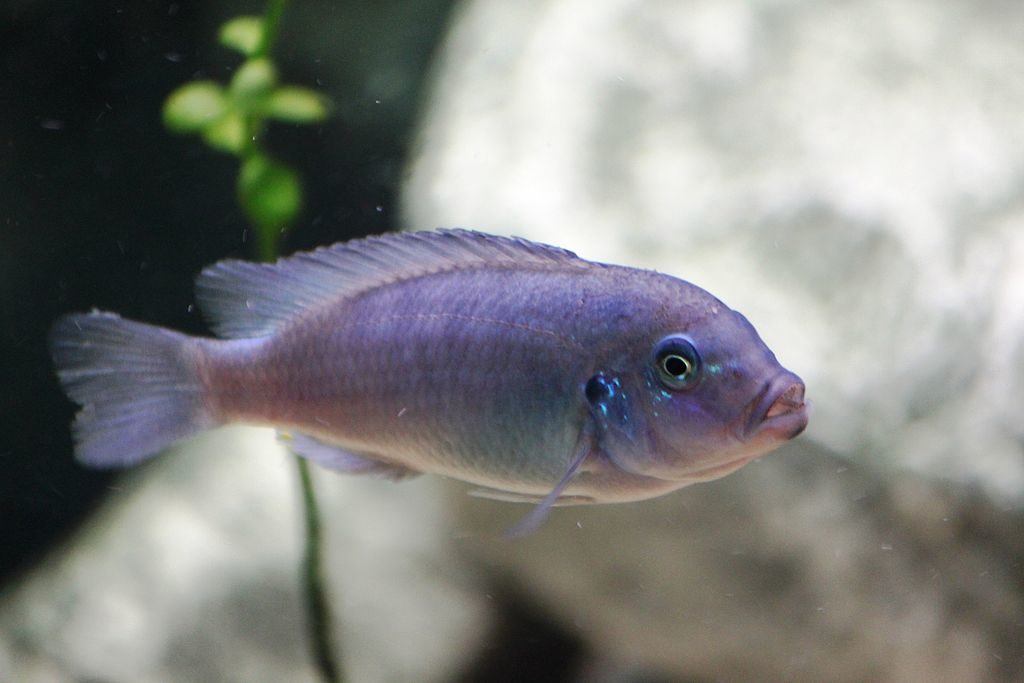Mbuna cichlids are a must-have for any freshwater aquarium. Colorful, interesting, and with unique personalities, this species of fish can enhance any fish tank set-up, so long as they’re properly cared for.
Here you’ll find a definitive guide to the care of mbuna cichlids in your home aquarium, so you can dive right into enjoying your new pet!
Contents
About the Mbuna Cichlid
Where do Mbuna Cichlids Come From?
The mbuna (pronounced um-boo-nah) cichlids, also known as Mbuna African Cichlids, come from Lake Malawi. Lake Malawi is an African Great Lake located in Tanzania, and is the ninth largest lake in the world.
Mbuna live in massive groups, and love rocky places to hide. They’re basically freshwater reef fish!
The most common mbuna cichlids are the red zebra cichlid, the blue zebra, the bumble or hornet cichlid, the golden cichlid, the electric yellow or yellow lab cichlid, and the blue johannii.
For other, more unique kinds, you’ll need to seek out a specialized breeder.
How Much Do Mbuna Cichlids Cost?
You’re in luck! Mbuna Cichlids are some of the cheaper fish available on the market. While not as cheap as goldfish, you can still get your money’s worth, as they range anywhere from $3.99 each to $23.99.
It all depends on where you buy your fish and how vibrant you want their coloring to be.
Mbuna Cichlid Care
Water Requirements
Your mbuna tank requirements will, luckily, be fairly straightforward.
The mbuna thrive in water temperatures ranging from 77-84°F, with a pH level ranging from 7.5-8.4, and a ammonium nitrite and ammonia content as close to 0ppm (parts per million) as you can manage.
Another requirement to their upkeep stems from the mbuna cichlid’s origins. They come from a large lake, with clean water that’s rich in oxygen and free of pollutants. This means that you’ll need lots of biological and mechanical filtration.

Lake Malawi sits on atop an area with very active tectonic plates, meaning the lake is extremely rich in minerals, resulting in water with a high pH, GH (general hardness), and KH (carbonate hardness).
People with very hard water will find that their mbuna cichlids will do very well in their tanks. It would be a good idea to also include lime-based or calcareous décor to keep the mineral levels of your tank high.
Tank Requirements
There’s also the option of buying Malawi cichlid salt to add to the tank, so as to achieve the proper levels as well.
Mbuna cichlids are definitely group fish, and they get bigger in captivity than they do in the wild. They’re also highly territorial. This means you’ll need a larger tank to accommodate the number and size of your mbuna cichlids.
Fifty-three gallons minimum is your best bet. This means a minimum of four feet, but a larger tank would be even better. Your tank should be deep and wide, so that it mimics the conditions of Lake Malawi.
You should also ensure the water is nice and oxygenated. You can achieve this by using an airstone or a Venturi.
Tank Set-Up
It’s recommended that these fish be kept in large groups, due to their territorial nature. There should be at least two females to every male, and you should introduce them all into the tank at the same time, so as to avoid any ganging up on new members.
When you get mbuna cichlids, you’re making a decent-sized commitment, as the recommended school size is at least twenty fish, although thirty or forty is even better.
If you’re not interested in breeding your fish, it’s wise to just have all females. Male cichlids are very aggressive and will defend their territory from any and all perceived threats, especially other males.

This is also a reason to have a number of rocks built up for hiding spaces, not only for the females but for the males to establish a clear territory. They’ll be less likely to leave their little hidey hole and fight, for fear of losing it to any encroaching males.
Health Issues with Mbuna Cichlids
Beware of what’s called the “Malawi bloat.” This is when your cichlid’s stomach and neck bloat up and become very firm. The eyes can even pop a bit. Unfortunately, this is almost always fatal.
The best way to avoid this issue is to ensure your mbuna cichlids consume the right foods.
There are many types of cichlids, and therefore many types of food, so they need a type designed specifically for them – mainly, an algae-based food aimed at herbivores.
Mbuna Tank Mates
What fish go well with cichlids? There are eight fish that are best suited as tankmates – but this isn’t true all the time, however. You may put a fish in, only to discover your cichlids hate and bully them.
You may need to try a few different kinds, rehoming the ones that don’t work out. Don’t be surprised if you never find another fish breed to add.
The fish that can be tried are the red-tail shark, giant danios, pleco, scavenger catfish, botia loaches, red rainbow fish, African red eyed tetra, and the leopard bushfish.
Here’s a video showing an example of a mbuna cichlid aquarium and more details on these fish.
Conclusion
Keep in mind that mbuna cichlids, while easy once you get the hang of them, are still fish that can take some getting used to and aren’t recommended for the beginner aquarist.
However, once you know what you’re doing, everyone will love your tank of vibrant and beautiful mbuna cichlids.
Do you have any tips on mbuna cichlid care?


